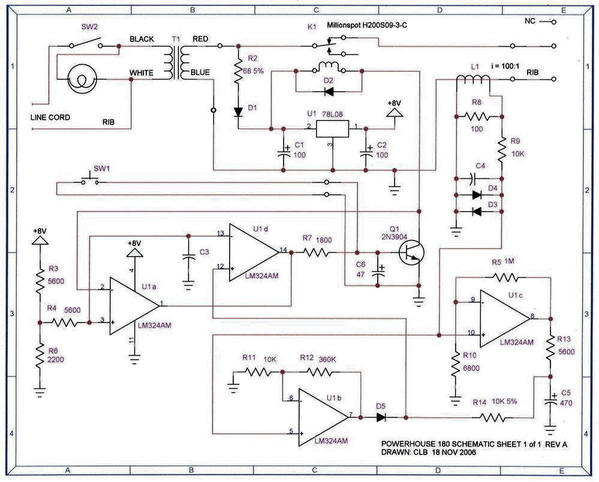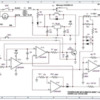I am an Electronics Tech, and have all the proper tools..
but in today's plug and play board replacement cost management agenda..the only time I utilize my Electronics Degree to its fullest is on my Trains...
Fortunately I got the Degree to make MONEY, and since I'm over educated and WELL PAID, I can live with the limits of my Skill Set Requirements of my job.
I install every type of Electronics Communicating System from Fire to Door Security..
I can use an OHM meter to resolve most issues, or a Specially Designed Tester for Specific applications, and most issues are easily identified..and usually a result of a carpenter and his screw gun, or a plumber and his torch...
This schematic is lacking information I need..like Voltage at every component..
and there is a triangle just after Capacitor C2 showing +8 V...which I will assume is a test point only..
and "RIB" I am just guessing is the side of the cord with the little rib..which is usually Neutral..
the PIMA brick is open for all to see..
I see no physical signs..
no burns on components where the Smoke escaped..
no loose solder points
no capacitor confetti
I am getting 5.4 VAC output across Red and Blue..If I'm not far off ..I believe that should be a step down Transformer, producing 18 VAC at that point..
I've googled
and printed the schematic..
now I'm tired..went back to work after 9 days of Vacation..which was seriously MARRED by a loud angry pop...
I will continue my quest later tomorrow...
If any one feels like they can fill in the voltage drops at each component..I would use my clout to get you a better berth in heaven...
assuming that's where you're going.. and you are really patient and can wait for death to arrive before you collect...and if you believe in Heaven.. then you can certainly believe I have clout..which I do..and fortunately, this is one of the many sins, JC hung on a cross to pay for..I am just assuring He is getting His moneys worth..and if you aint laughing.. then pray for a sense of humor...
After all, Jesus hung on a cross before He was 35, what have you done with YOUR little life, Slacker?
http://www.harrisonelectronics...ay-H100FDC-SPDT2.pdf
http://pdf1.alldatasheet.com/d...671/WINGS/78L08.html






